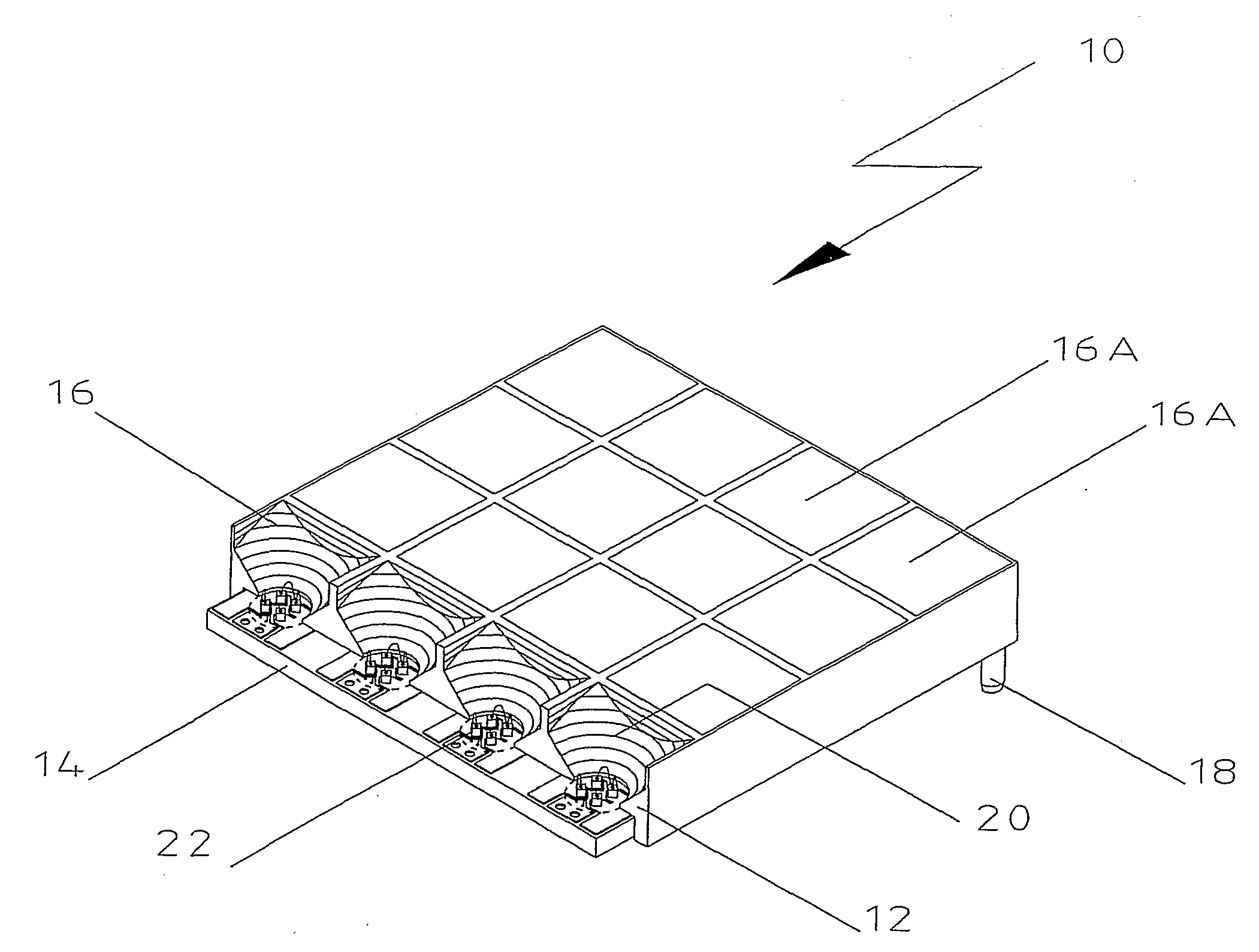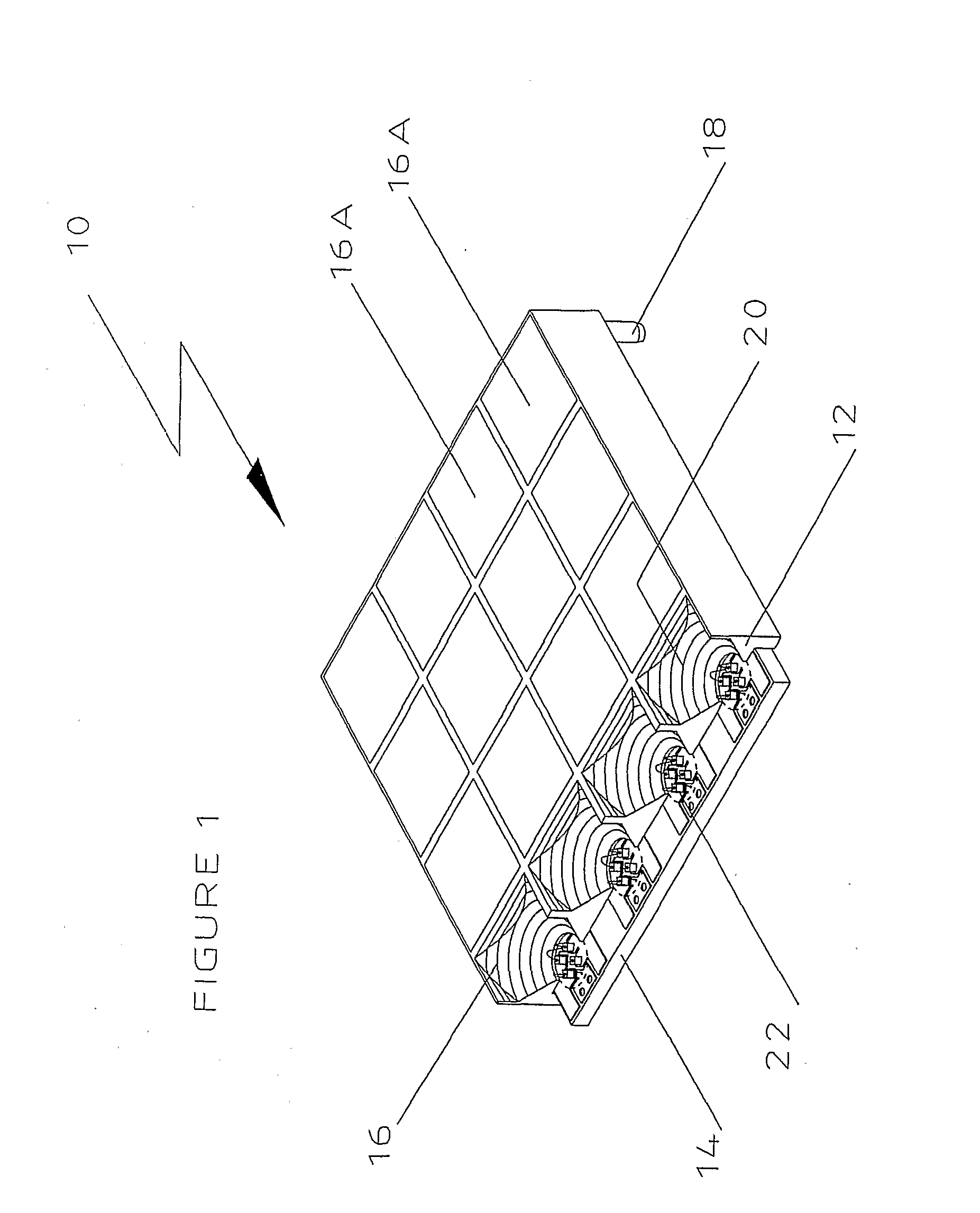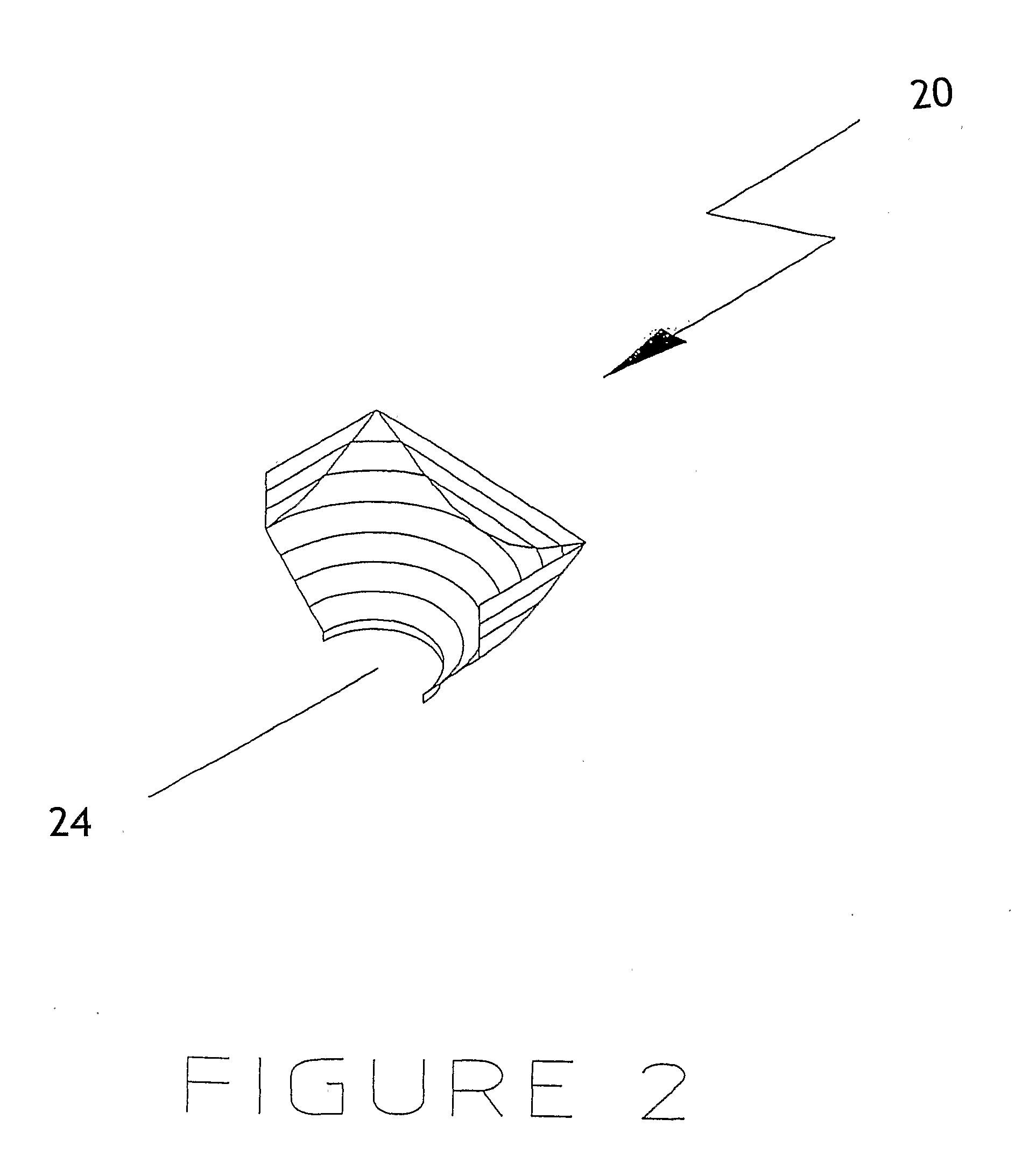Pixel Array and Tile for a Video Display
a video display and array technology, applied in the field of pixels, can solve the problems of inability to produce pixels individually, inability to automatically mount the pixels, and prohibitive manual mounting costs
- Summary
- Abstract
- Description
- Claims
- Application Information
AI Technical Summary
Benefits of technology
Problems solved by technology
Method used
Image
Examples
Embodiment Construction
[0041]Turning first to FIG. 1, pixel array 10 is shown with reflector array 12 and dice carrier 14. Pixel array 10 has an array of 4×4 pixels 16, only four of which are shown in detail, in partly broken away form.
[0042]Pixel array 10 includes non-conductive peg 18. Although not shown, a similar peg is located at each of the other three corners of pixel array 10.
[0043]Reflector array 12 includes sixteen reflector means 20. These are discussed in further detail in connection with FIGS. 2 and 3.
[0044]Pixel array 10 also includes a set of dice for each pixel 16. In this embodiment, each set of dice has four dice, illustrated generally at 22. These may comprise one red die, one blue die and two green dice, or any other desirable combination. The invention is not limited to any particular number of dice, although for colour video displays it is usually necessary to have at least three dice—one red, one blue and one green.
[0045]As can be seen from FIG. 1, each set of dice 22 is situated on...
PUM
 Login to View More
Login to View More Abstract
Description
Claims
Application Information
 Login to View More
Login to View More - R&D
- Intellectual Property
- Life Sciences
- Materials
- Tech Scout
- Unparalleled Data Quality
- Higher Quality Content
- 60% Fewer Hallucinations
Browse by: Latest US Patents, China's latest patents, Technical Efficacy Thesaurus, Application Domain, Technology Topic, Popular Technical Reports.
© 2025 PatSnap. All rights reserved.Legal|Privacy policy|Modern Slavery Act Transparency Statement|Sitemap|About US| Contact US: help@patsnap.com



